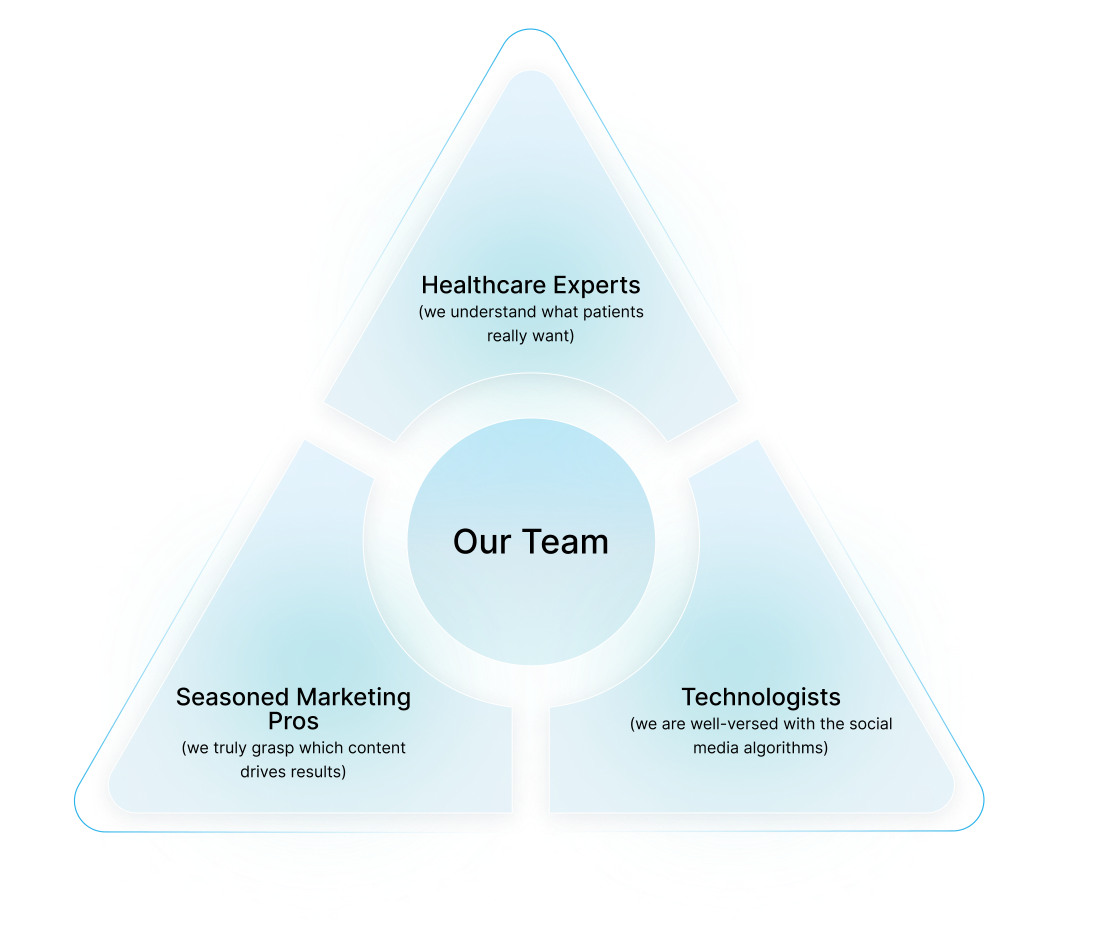Struggling to
A
With Social Media?
We Can Fix That.
Partner with our healthcare social media experts and transform your practice's online presence.
Problems We Solve
“We post consistently on social media, but it still feels like a ghost town (no engagement).”
Before us, most clients assumed Posting = Marketing. However, random or promotional content often misses patient engagement. This is what we do:
- Zero in on content that resonates with your patients, like helpful videos, tips for chronic conditions, and the latest updates.
- Create top-notch, platform-optimized content with visuals that pop and grab attention.
- Time your posts perfectly to reach patients when they’re most likely to see them.
- Keep an eye on how each individual post is performing and tweak our approach for better results.
“I oversee my practice’s social media content. How would your services complement my role?”
The Best Duo = Your Knowledge + Our Social Media Expertise (content trends, platform algorithms, data insights, and creativity)
We turn your ideas into engaging social posts and offer performance insights to keep you consistently effective, not just a one-hit-wonder. This approach enhances your digital presence and strengthens your connection with patients.
“We heard suggestions, we are present on most platforms,but it isn't bringing the expected social media traffic."
Many think being on every platform is enough, but a focused approach is better. By understanding your target patients—their needs, preferences, and behaviors—you can choose the platforms where they’re most active. For one of our clients, a sports medicine practice, we targeted Instagram because their potential patients—athletes and fitness enthusiasts—are highly visual and active there. Using Instagram to showcase sports injuries, recovery stories, and exercises connected them effectively with their audience.
One takeaway: “Spray and pray” doesn’t always work to bring the required traffic.
The Practifly Process: How We Get Your Healthcare Social Media Marketing Right
A seven-step, data-driven process to drive results for medical practices like yours.
Why Choose Practifly for
Your Healthcare Social Media Needs?
We Bring the Best of
Both Three Worlds

Ready to Ensure That Your Social Media Attracts New Patients and Engages Existing Ones?
Frequently Asked Questions
- Improved Patient Interaction: Social media allows for real-time communication with patients, making it easier to share updates and respond to questions.
- Enhanced Visibility: Active social media presence increases the reach and recognition of healthcare providers.
- Educational Value: It provides a platform for spreading crucial health information and preventive care tips.
- Privacy Risks: Handling patient information on social media can pose privacy and compliance challenges.
- Time and Effort: Maintaining a dynamic social media presence demands consistent effort and resources.
- Public Criticism: Negative feedback or reviews can be more visible, requiring careful management.
- Awareness Campaigns: Using posts and hashtags to raise awareness about health issues such as cancer or mental health.
- Live Health Q&A: Hosting live sessions with healthcare professionals to answer health-related questions from the community.
- Patient Testimonials: Sharing stories from patients about their experiences to build trust and credibility.
- Create a Strategy: Develop a clear plan outlining your goals, audience, and content strategy.
- Be Consistent: Post regularly and interact with followers to maintain engagement and build relationships.
- Share Relevant Content: Provide useful and accurate health information, updates, and patient stories.
- Monitor Interactions: Track and respond to comments and messages promptly to manage your online reputation effectively.